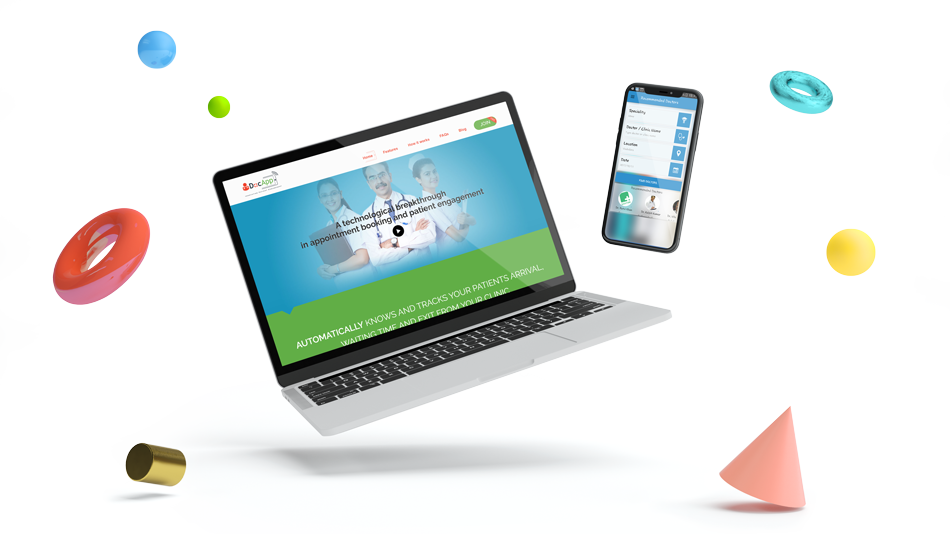SMART TRACKING
Growing your Practice to Create a Better Patient Experience
Your patients are the cornerstone of your practice. In today's competitive market, prioritizing patient satisfaction is crucial. It's essential to take a comprehensive approach to providing top-notch patient care and ensuring a seamless experience. Our services are designed to enhance your online visibility, improve patient communication, and streamline re-care reminders, ultimately leading to a superior patient experience.

Key Features of Appointment Booking Software
An effective Appointment and Engagement Solution optimizes healthcare appointment scheduling, communication, and enhances the patient experience. Here are the key features that a high-quality solution should incorporate:
Registration of patients and scheduling of appointments
Streamline the registration and appointment booking process for patients, allowing for quick and hassle-free access. Patients can easily input their personal information and insurance details through a secure online platform.
Medical History Management
Enable efficient collection, categorization, and access to patient medical records, encompassing prior health issues, surgical procedures, prescriptions, sensitivities, and pertinent details.
Reminders for appointments & Messaging
Delivering personalized appointment reminders via SMS, emails, or phone calls is an effective method of reaching out to patients. You have the flexibility to tailor the content and schedule of the reminders according to their preferences.
Digital Payments
Patients have the option to conveniently and securely make payments for medical services. This feature has been specifically designed to enhance the overall patient experience, streamlining the process for patients and providers to effectively manage healthcare expenses.
Benefits of Appointment Booking Software
Empowering patients with information
Reduce physician burnout
Reduce costs and improve quality
Reduce administrative tasks
One convenient portal
Relationship between patients and providers
Unlock the potential of your visionary project with our expert team. Contact us today and let's work together to bring your dream to life.
Embark on Your Visionary Project
Industry we served
Yorem ipsum dolor sit amet, consectetur adipiscing elit. Nunc vulputate libero et velit interdum, ac aliquet odio mattis.

Retail and Shopping

Healthcare

Financial Technology
Platforms & Integrations
Enhance the functionality of your vehicle tracking system with our seamless integration solutions.

Technology Platforms
Optimized for seamless performance across current web and mobile platforms
Third-party integration
Effortless integration for enhanced customer value
Our Blogs: Feel the Beat of Innovation
Stay in sync with the latest in technology and business transformation.


Unlocking the Power of LangChain: Integration Best Practices for Modern AI Applications
This blog explores how LangChain empowers developers to build advanced AI applications by bridging LLMs with real-world use cases. It outlines best practices like custom embeddings, robust error handling, modular design, and prompt optimization for seamless integration. With examples from enterprise assistants to customer support tools, it highlights LangChain’s impact and addresses key challenges like scalability and compliance—offering a roadmap for successful, future-ready AI development.
June 18,2025


Claude AI Deployment Strategies: A Guide to Effective Integration and Optimization
This blog explores effective deployment strategies for Claude AI, Anthropic’s advanced, ethically aligned AI model. It outlines a phased approach—Preparation, Integration, and Optimization—for successful implementation. Real-world applications highlight Claude’s impact on DevOps, business operations, and developer productivity.
June 10,2025


Voice AI in 2025: Quietly Rewiring the Enterprise
Voice AI used to grab attention with flashy demos, talking avatars, and big promises. But in 2025, the focus has shifted to real, practical use. It’s no longer about showing off or testing ideas — it’s about getting real work done. Today, Voice AI helps in important areas like hospital support and customer service in different languages.
June 05,2025
Frequently Asked Questions
-
What is the role played by patient engagement?
Patient engagement plays a pivotal role in the contemporary healthcare landscape, empowering patients to actively participate in their healthcare journey. By incorporating patient engagement solutions, healthcare providers can foster effective communication and prioritize patients’ preferences, needs, and values in care planning to enhance overall health and well-being.
-
What is the online appointment system?
Patients have the convenience of scheduling appointments with healthcare professionals online, using a user-friendly web interface. Patients can easily choose their preferred date, location, provider, and appointment time, making the process seamless and efficient.
-
Can the patient cancel or reschedule an appointment using this solution?
Many healthcare solutions offer online appointment cancellation and rescheduling for patients, providing increased flexibility and improved schedule management for healthcare providers.







